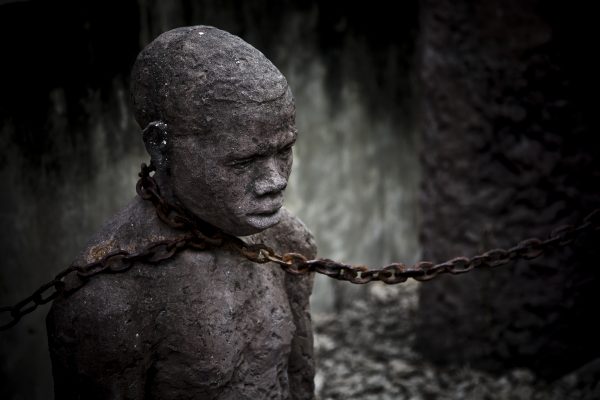Imam Abu Hanifa died in 150 Hijri (769 AD) at the age of 70. There are two opinions about his death but the most popular one is that he died in jail as his food was poisoned. Some say he was released from the jail in critical heath just a few days before he passed away.
Imam Abu Hanifa died in 150 Hijri (769 AD) at the age of 70. There are two opinions about his death but the most popular one is that he died in jail as his food was poisoned. Some say he was released from the jail in critical heath just a few days before he passed away.
The real name of Imam Abu Hanifa was Numan ibnu Sabit, but he is known to everyone with his Kunya i.e. nickname “Abu Hanifa”. There are two versions of facts behind this name. One is that he had a daughter whose name was Hanifa. On the other hand, the word ‘Hanifa’ means ink pot, and because the Imam used to keep an ink pot with him all the time, that is why he was called Abu Hanifa (sources found here and here, and from the book “Imam Abu Hanifa: Life & Work”, compiled by Abul Hasant Qasim and published by Somokalin Prokashon, Bangladesh). He was also known as Immaul Azam i.e. great Imam.
Imam Abu Hanifa was the earliest among the renowned four Imams of the Sunni branch of Islam, and he is the only one who was a Tabeyi according to most of the scholars and historians. A Tabeyi means a person who met a Companion of the Prophet (PBUH). According to various sources, Imam Abu Hanifa met several Companions including the famous Anas ibn Malik.
Imam Abu Hanifa was born in 80 Hijri (699 AD) in Kufa and he was the only son of his parents. His father was a rich businessman and from a very early age, he was involved in business with his father. His father died when he was 16. The Imam used to travel a lot for business and during one trip he met the famous Imam Ash-Shabi who gave him the advice to study the religion of Islam more in-depth.
That one piece of advice changed the life of Imam Abu Hanifa and he became one of the greatest scholars of Islamic history. He mastered multiples branches of the religion including theology, aqeedah (creed), fiqh (Islamic rulings), and Hadith (sayings of the Prophet). He was the pioneer to develop methods of looking into the texts of Quran and Hadith and deduce rulings out of them to resolve current issues.
Imam Abu Hanifa who also a prolific orator and debater who participated in numerous debates with atheists, murtad (people who left the religion Islam), mutazila (a deviant sector applying intellect over authentic sunnah to interpret certain verses of the Quran), and khareji (an extremist group) and defeated them. He was a master in that area but he always discouraged his students to get involved in debates.
There are numerous famous stories of his debates but in this article, I would like to share only one. A man at that time used to call the Sunni-recognized third Caliph of the time Utman Ibn Affan a Jew, and the local scholars could not convince him to refrain from saying such a thing. One day Imam Abu Hanifa said to that man that he has got a proposal of a good and pious groom for his daughter. The man became very happy about the proposal. Imam Abu Hanifa then said that there is only one issue that the groom is a Jew. The man then said how I can give my daughter in marriage to a Jew. Imam Abu Hanifa said, if our Prophet (PBUH) can give two daughters in marriage to a single Jew then why cannot you? The man understood his fault and stopped calling Uthman Ibn Affan a Jew. This incident shows that the Imam knew how to respond to an argument according to the level of intellect and understanding of his counterpart.
Imam Abu Hanifa had so many teachers. Notable among them was the famous Imam of Kufa, Hammad ibn Abu Sulaiman. At that time the most influential Hadith scholar of Makkah was Ata ibn Abi Rabah, who was also among the teachers of this great Imam. Apart from that, Imam Salim, who was the son of the famous companion Abdullah ibn Umar ibn Al Khattab and Ata Ibnu Yasar Hilali, who was a freed slave of Maimuna binte Al Harith, were also his teachers. Another notable teacher of Imam Abu Hanifa was Ja’far b. Muhammad al-Sadiq, the founder of the Ja’fari school of jurisprudence.
The Imam was a famed teacher throughout the region, and the number of his students was more than 700. The most famous student of Imam Abu Hanifa was Imam Abu Yusuf. Numerous students of this great Imam became famous muhaddiths of their times and Imam Bukhari and Imam Muslim collected many Hadith narrated through them. His students migrated to different parts of the Muslim world, especially in Afghanistan, Bukhara, and India.
Imam Abu Hanifa wrote several books as well. The most famous one, relating to creed (Aqeedah), is “Fiqhul Akbar”. He was also a great scholar of Hadith. He collected 40,000 Hadiths and after selecting the authentic (Sahih) Hadiths out of them he wrote his book “Kitabul Asar”. This was one of the first of its kind for a book written during its time in Islamic history, with Imam Malik later following this approach and writing “Muatta Imam Malik”.
By just looking at the numbers like how Imam Abu Hanifa collected around 40,000 Hadiths whereas Imam Bukhari collected 900,000; one cannot say that Imam Abu Hanifa was not a giant scholar of Hadith. Indeed he was. During his time the number of fabricated Hadith was much less. Moreover, by the time it reached later scholars, a single Hadith was narrated from multiple sources and every Hadith was treated as a separate one. However, the Imam Abu Hanifa compiled those Hadiths in his book which had only one version. If we consider “Kitabul Asar” according to subsequent texts comprising every single Hadith, then this small book will also become a huge book of multiple volumes.
His character was a complete mixture of all the good virtues including, but not limited to, forbearance, patience, and endurance. He never reacted towards his critics with anger. He never spoke unnecessarily nor was afraid to speak the truth if it was required. His piety and sincerity were unmatchable and truly he was a perfect combination of knowledge and piety.
During 130 Hijri, Imam Abu Hanifa was asked by the then Governor of Kufa to take charge of State Treasury but he refused. Such refusal infuriated the Governor, and Imam Abu Hanifa was imprisoned and lashed till he was about to die but he continued to hold his position. Ultimately he was released and he migrated to Makkah where he remained until the Abbasid Caliph Al Mansoor came into power. Caliph Mansoor also made an offer to Imam Abu Hanifa to take the post of Chief Judge, but it was turned down and again the Imam was arrested and lashed.
Imam Abu Hanifa died in 150 Hijri (769 AD) at the age of 70. There are two opinions about his death but the most popular one is that he died in jail as his food was poisoned. Some say he was released from the jail in critical heath just a few days before he passed away. The entire Ummah loomed with grief and sadness with the demise of this giant scholar of Islam. A total of six congregational funeral prayers were prayed over him and the first one was attended by more than 50,000 people. The legacy that Imam Abu Hanifa left behind is non-fading. To date, millions of Muslims continue to benefit from his teachings and are consistently making dua for this amazing slave of Allah.
Bibliography
- The Quran
- www.sunnah.com
- www.islamqa.info/en
- Imam Abu Hanifa: life & work [compiled by Abul Hasant Qasim and published by Somokalin Prokashon, Bangladesh]. This Book is an excellent compilation of authentic books written on Imam Abu Hanifa and other books of history.
- Lecture of Sheikh Bilal Assaad found here and here.
- Bridging the Gap: Imam Abu Hanifa and the Prophet’s Family.





